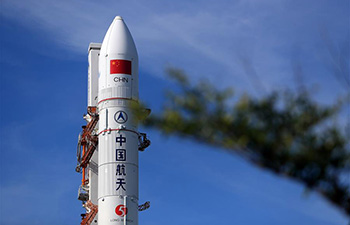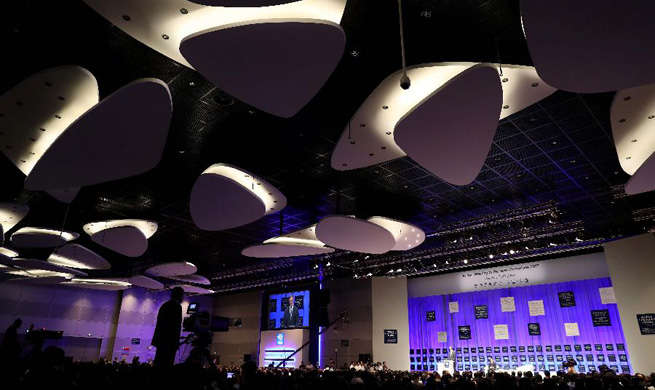LOS ANGELES, June 26 (Xinhua) -- At a time when the quest in the world of electronics is always for smaller and faster units with infinite battery life, a new research may accelerates quest for quicker and longer-lasting electronics by making topological insulators (TI) magnetic well above room temperatures.
In a paper recently published in Science Advances, researchers reported that they have created a TI film just 25 atoms thick that adheres to an insulating magnetic film, creating a "heterostructure."
This heterostructure makes TI surfaces magnetic at room temperatures and higher, to above 400 Kelvin or more than 720 degrees Fahrenheit.
The surfaces of TI are only a few atoms thick and need little power to conduct electricity.
If TI surfaces are made magnetic, current only flows along the edges of the devices, requiring even less energy, according to a news release from the University of California, Riverside (UCR).
Thanks to this so-called quantum anomalous Hall effect, or QAHE, a TI device could be tiny and its batteries long lasting, said Jing Shi, a professor of physics and astronomy at UCR.
Topological insulators are the only materials right now that can achieve the coveted QAHE, but TI surfaces are not naturally magnetic.
Scientists had been able to achieve magnetism in TI by doping, which means introducing magnetic impurities to the material, which also made it less stable.
However, in transition metal-doped TIs, the only experimentally demonstrated QAHE system to date, the QAHE is lost at practically relevant temperatures.
Many scientists blamed the doping allowed TI surfaces to demonstrate QAHE only at very low temperatures, a few hundredths of a degree in Kelvin above absolute zero, or about 459 degrees below zero Fahrenheit.
Obviously, it is not exactly conducive to wide popular use, which prompted researchers to start looking for another technique to make TI surfaces magnetic.
At UCR, Shi's team is now focused on developing films, composites and other ways to harvest or use energy more efficiently from nano technology.
Signatures showing that the TI surface states acquire robust ferromagnetism are revealed by distinct squared anomalous Hall hysteresis loops at 400K, according to the new study.
In 2015, Shi's lab first created heterostructures of magnetic films and one-atom-thick graphene materials by using a technique called laser molecular beam epitaxy, according to the UCR.
"The materials have to be in intimate contact for TI to acquire magnetism," Shi said. "If the surface is rough, there won't be good contact. We're good at making this magnetic film atomically flat, so no extra atoms are sticking out."
The materials were then sent to Shi's collaborators at Massachusetts Institute of Technology, who used molecular beam epitaxy to build 25 atomic TI layers on top of the magnetic sheets, creating the heterostructures, which were then sent back to UCR for device fabrication and measurements.
The findings show that by taking the heterostructures approach, TI surfaces can be made magnetic and robust at normal temperatures, Shi said.
However, more research is needed to make TI show QAHE at high temperatures, and then make the materials available for miniaturization in electronics.

















